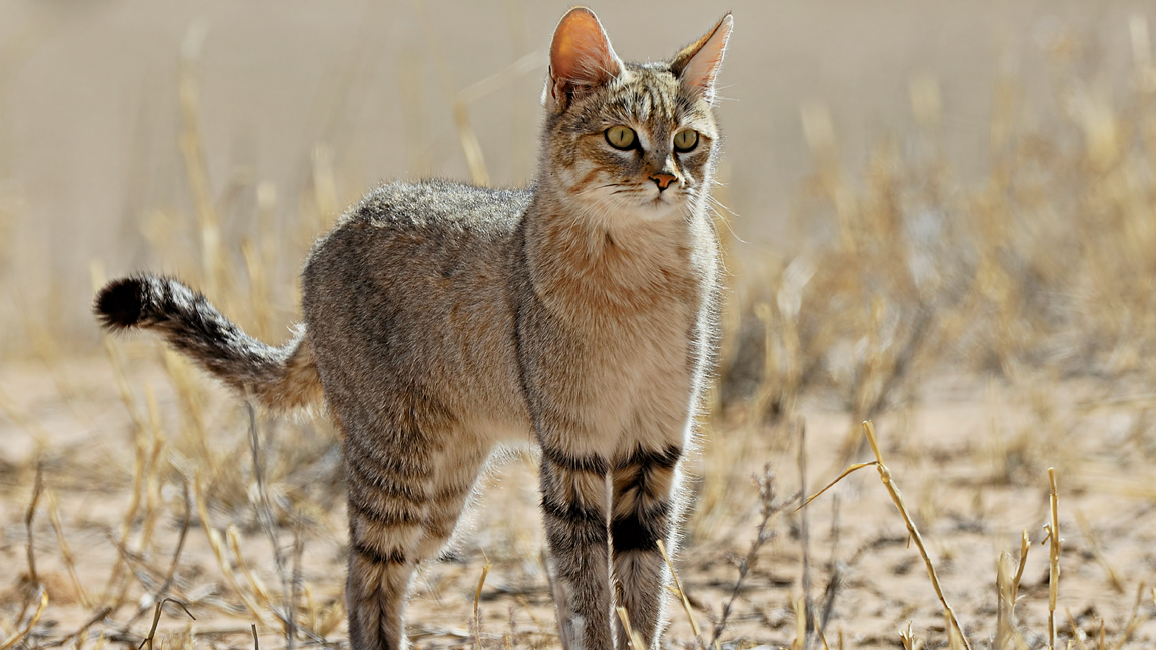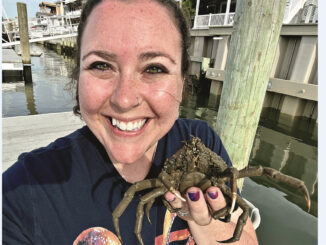
This Cat is Wild
By Hannah SchardtIs this someone’s pet tabby cat, with ears perked up for the sound of a distant can opener?
Nope—it’s a Near Eastern wildcat! But there’s a very good reason you might mistake it for a house cat: These African wildcats were the great-great-great-grandcats of the feline pets we know and love.
COME IN, KITTY!
More than 9,000 years ago, some Near Eastern wildcats moved into villages and onto farms to hunt mice and eat food scraps. Those cats evolved into the purrrrr-fect pets we know today. But their wild
kin still roam in many parts of Africa.
CAT VS. CAT
Pet cats and wildcats aren’t exactly the same, of course. But even scientists can have a hard time telling them apart by looks alone. Compared to house cats, Near Eastern wildcats tend to have longer legs, longer tails, and a special pattern of rings around their legs and tails.
Wildcats aren’t found only in Africa. They also live in Europe and Asia. They are all members of the same species. But wildcats from different parts of the world can look very different.
FAMILY MATTERS
Like their tame cousins, wildcat moms usually give birth to between two and six kittens in a litter. When Mom leaves her kittens to hunt for food, she keeps an ear out for her babies’ high-pitched mews. If she hears them crying, she rushes back to try to protect them. A hungry python or jackal may try to steal a kitten, so Mom doesn’t stray too far.
ON THE PROWL
If you’ve ever watched a house cat stalk a piece of string—or a mouse in the house—you know what a hunting wildcat looks like. The wildcat crouches, quiet and still. Its striped coat blends in with the field or forest that surrounds it. Sharp eyes and ears help it scan for prey. When it spots a tasty little animal—pounce!—the cat leaps forward, as far as 10 feet in a single jump.
Near Eastern wildcats hunt mostly on their own and often at night. Their favorite foods are mice and other rodents. But they will also leap into the air to catch birds in mid-flight.
WILD THINGS
Life can seem scary when you’re a small cat that shares a habitat with big, dangerous predators. But the greatest threat to the wild life of Near Eastern wildcats isn’t a jackal or a snake. It’s the ordinary house cat!
If a wildcat lives near humans, there’s a good chance it will meet a pet cat. The two cats may mate. When they do, their kittens won’t be true wildcats. Scientists worry that, if house cats and wildcats keep having kittens, eventually there will be no truly wild wildcats left.
“This Cat is Wild” originally appeared in the February 2016 issue of Ranger Rick magazine.
(Click on each image above for a closer view of the story.)



















